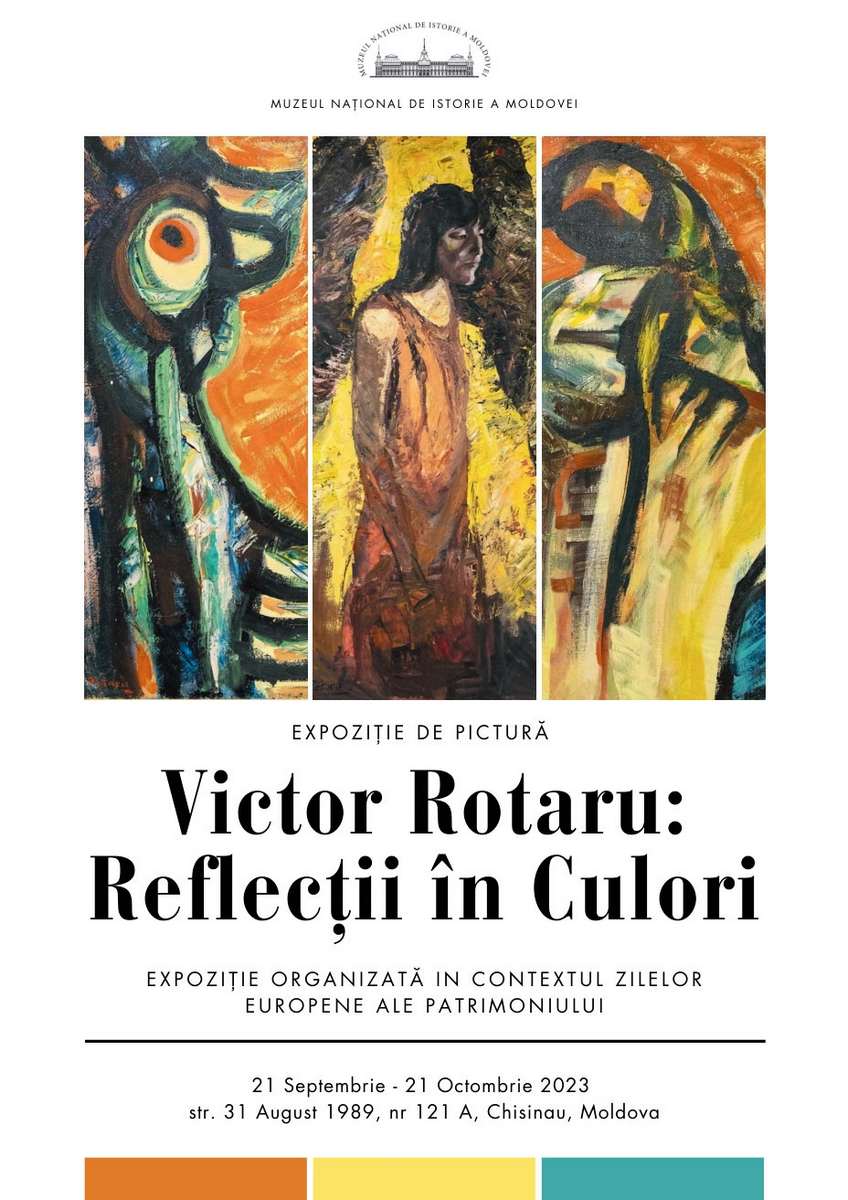 On September 21, in Room no. 1 of the National Museum of History of Moldova, will take place the opening of a unique exhibition, entitled "Victor Rotaru: Reflections in Colors" which includes an impressive number of paintings by the plastic artist, collected and kept by the Kliuchnikoff family, most of which will be exhibited to the general public for the first time.
On September 21, in Room no. 1 of the National Museum of History of Moldova, will take place the opening of a unique exhibition, entitled "Victor Rotaru: Reflections in Colors" which includes an impressive number of paintings by the plastic artist, collected and kept by the Kliuchnikoff family, most of which will be exhibited to the general public for the first time.
Victor Rotaru (1949-2020) is a prominent name in the world of Moldovan art. From an early age, he showed an artistic nature, discovering his special talent for drawing. Although they had in front of them a promising future artist, the times in which he grew up were marked by the strictly ideological demands of socialist realism, imperative in the Soviet period.
However, Victor Rotaru chose a less conventional path. Instead of joining the socialist realism movement, he preferred to maintain his artistic integrity and make a living in another way. He worked as an assistant stage designer at the "Moldova-film" Studio and later at the "Maria Bieșu" Opera and Ballet Theatre. He was also a painting and drawing teacher at children's art schools in the villages around Chisinau. It was a brave decision to give up his career as an artist, simply to stay true to his own artistic vision and not submit to the ideological pressures of the era.
During his career, Victor Rotaru revealed his artistic influences, inspired by artists such as Matisse, Modigliani, Picasso and Dali, from impressionism and post-impressionism. Today, Victor Rotaru's works retain the imprint of the difficult times in which he lived, but each of them conveys a deep philosophical message, reflecting his artistic essence. His compositions are unique in their energy and dynamics, as well as in their color combinations. They reflect the experiences and personality of an artist who said: "Loneliness is my way of being. I am a sentimental nature. Feelings, sometimes full of light, sometimes abysmal, guide me all my life."
Victor Rotaru cared a lot about his family, he had special relationships with his parents and sisters. He was an open person, he liked guests and soulful conversations. They were colleagues and close friends with Tudor Braga, Andrei Sârbu, Petru Jereghe and Mihai Țăruș.
In the creative activity, he manifested himself in portraiture, still life, genre painting, but also in scenography. Having to create and confirm himself under the restrictive conditions of the Soviet regime, he was an artist with a difficult fate, because he did not want to promote socialist realism in art. In this situation it was practically impossible to survive as a painter and for this reason he retired. He regretted wasting a lot of time...
"When I realized that I would never be able to reach Mihai Grecu's height, I gave up!"
Victor Rotaru is a remarkable artist whose personal and artistic choices have defined him in a unique way. He remained true to his own artistic vision and refused to submit to the ideological pressures of the age, demonstrating his courage to follow his own path in the art world.
The painting exhibition "Victor Rotaru: Reflections in Colors" can be visited between September 21 and October 21, 2023, in Room no. 1 of the National Museum of History of Moldova, Chisinau, 31 August 1989 street, 121A.




















































